What are tumours? A brief description of tumors. Know all the things to remain 100% healthy!!
- What are tumours? A brief description of tumours:
- Understanding Benign and Malignant Tumours(A brief description of tumors)
- Causes and Pathways of Tumour Formation(What are tumours)
- Different Types of Tumours(What are tumours)
- Diagnosis, Treatment, and Prevention Approaches(A brief description of tumors):
- Conclusion:(A brief description of tumors)
- FAQs:(A brief description of tumors)
What are tumours? A brief description of tumours:
What are tumours?(A brief description of tumours.)
A tumor is a mass or group of abnormal cells that form in the body. These cells can come together to create a solid lump of tissue. It’s important to note that not all tumors are cancerous. Let’s break down the different types:
- Benign Tumors🙁A brief description of tumors)
- Benign tumors are not cancerous. They grow slowly and remain localized, meaning they don’t typically spread to other parts of the body.
- While they are rarely life-threatening, some benign tumors may still require medical attention if they press on nearby structures.
- Examples include benign bone tumors (osteomas), brain tumors (such as meningiomas), and uterine fibroids.
- Malignant (Cancerous) Tumors:(A brief description of tumors)
- Malignant tumors are cancerous and can spread into nearby tissues, glands, and other parts of the body. These new tumors are called metastases.
- Cancerous tumors can be life-threatening and often require aggressive treatment.
- Examples include lung cancer, pancreatic cancer, and glioblastoma (a type of brain tumor).
- Precancerous Tumors:(A brief description of tumors)
- Precancerous tumors are initially noncancerous but have the potential to become cancerous if left untreated.
- Examples include actinic keratosis (a skin condition), cervical dysplasia, and ductal carcinoma in situ (a type of breast tumor).
Causes of Tumors(A brief description of tumors)
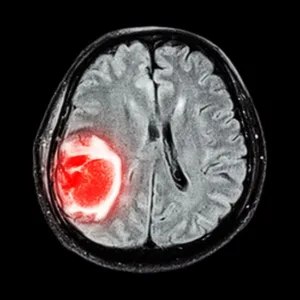
What are tumours? A brief description of tumors. Pic credit: Pinterest
Tumors arise when the body’s cells don’t behave as expected. Here’s how it happens:
- Cell Overgrowth: Sometimes, cells don’t die off as they should, leading to an accumulation of abnormal cells.
- Fast Cell Multiplication: New cells may grow and multiply faster than normal, resulting in the formation of a tumor.
Risk Factors(A brief description of tumours)
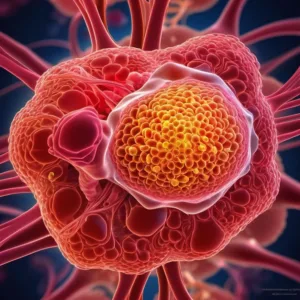
What are tumours? A brief description of tumors. Pic credit: Pinterest
Certain factors increase the risk of developing tumors:
- Genetics: Family history of tumors or certain genetic mutations.
- Environmental Exposures: Exposure to carcinogens (cancer-causing substances).
- Age: Tumors become more common as we age.
Understanding Benign and Malignant Tumours(A brief description of tumors)
Understanding Benign Tumors
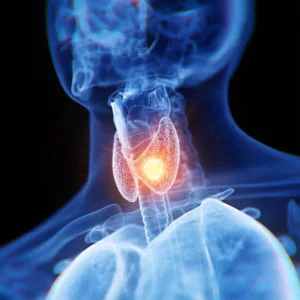
What are tumours? A brief description of tumors. Pic credit: Pinterest
Benign tumors are like the friendly neighbors of the cellular world. They set up shop, but they don’t cause chaos. Here’s what you need to know:
- Definition: Benign tumors consist of abnormal cells that grow slowly and remain localized. They don’t invade nearby tissues or spread to distant parts of the body.
- Cell Behavior:
- Benign cells maintain their original structure and function.
- They don’t break the rules—they stick to their designated roles.
- Characteristics:
- Encapsulated: Benign tumors are encapsulated, meaning they have a well-defined boundary. Think of it as a little cellular fence.
- Slow Growth: These tumors take their time. They don’t rush to expand.
- Non-Invasive: Benign cells respect personal space. They don’t invade neighboring tissues.
- Examples:
- Fibroids: Uterine fibroids are common benign tumors in the uterus.
- Lipomas: These are soft, fatty tumors often found under the skin.
- Adenomas: Benign tumors in glands (like the thyroid or adrenal glands).
- Treatment and Outlook:
- Most benign tumors don’t require aggressive treatment.
- Surgical removal may be necessary if they cause discomfort or affect nearby structures.
Understanding Malignant Tumors
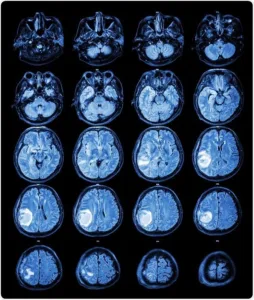
What are tumours? A brief description of tumors. Pic credit: Pinterest
Now, let’s meet the rebels—the malignant tumors. These cells play by their own rules, and it’s not a game of Monopoly:
- Definition: Malignant tumors are cancerous. They grow aggressively, invade surrounding tissues, and can spread to other parts of the body (metastasis).
- Cell Behavior:
- Malignant cells misbehave. They lose their original function and structure.
- They’re like party crashers—disrupting the cellular harmony.
- Characteristics:
- Infiltrative: Malignant cells infiltrate nearby tissues, breaking down barriers.
- Fast Growth: These tumors are sprinters. They multiply rapidly.
- Metastasis: The real trouble begins when malignant cells hitch a ride to distant organs via blood or lymph.
- Examples:
- Breast Cancer: Invasive ductal carcinoma is a common malignant breast tumor.
- Lung Cancer: Non-small cell lung cancer spreads aggressively.
- Melanoma: A skin cancer notorious for its metastatic potential.
- Treatment and Outlook:
- Malignant tumors require aggressive treatment—surgery, chemotherapy, radiation, or targeted therapies.
- Early detection improves survival chances.
Causes and Pathways of Tumour Formation(What are tumours)
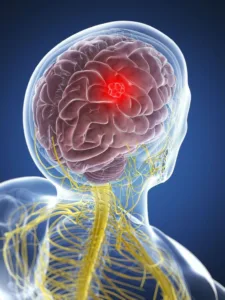
What are tumours? A brief description of tumors. Pic credit: Pinterest
1. Normal vs. Aberrant Cellular Behavior
Most aspects of normal cellular behavior are subverted during tumor development. These changes include:
- Aberrant Signaling: Both pro- and anti-proliferative pathways go haywire. Tumor cells receive mixed signals, leading to uncontrolled growth.
- Avoiding Cell Death: Tumor cells acquire the capacity to evade apoptosis (programmed cell death). They become immortal rebels.
- Endless Replication: Unlike normal cells, tumor cells can replicate indefinitely, bypassing the usual cellular clock.
- Metabolic Perturbations: Tumors alter their metabolic profiles, fueling their rapid growth.
2. Genetic Underpinnings of Malignancy
A malignant tumor is essentially a genetic disease. It arises due to the accumulation of somatic alterations in specific genes. These alterations can be caused by various factors:
- Genotoxic Effects:
- Physical: Ionizing radiation (such as X-rays) damages DNA.
- Chemical: Exposure to genotoxic substances (carcinogens) leads to mutations.
- Biological: Viruses (like HPV or hepatitis B) interfere with cellular replication processes.
3. Cell-by-Cell Variability
Not all tumor cells are created equal—even within a single tumor. Only a small fraction of cells possess the capacity to divide and sustain tumor growth. This heterogeneity has significant clinical implications. Researchers now study thousands of individual cells using high-throughput analysis methods. By characterizing DNA, RNA, and proteins, they uncover how this variability affects tumor behavior, metastasis, and treatment response.
4. The Tumor Microenvironment
A tumor’s growth isn’t solely determined by its own cells. The microenvironment—the cellular neighborhood in which the tumor resides—plays a crucial role. Factors include:
- Immune System Vigor: How well the immune system recognizes and attacks cancer cells.
- Interactions with Nearby Cells: Tumors communicate with immune cells and neighboring tissues.
- Stromal Cells: These non-cancerous cells (fibroblasts, endothelial cells) influence tumor behavior.
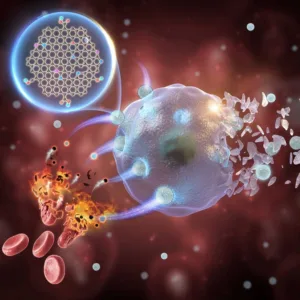
What are tumours? A brief description of tumors. Pic credit: Pinterest
5. Decoding Tumor Signals
Researchers aim to decode the signals that tumors send to immune cells and stromal components. Understanding these interactions will reveal whether a tumor remains benign or becomes aggressive. Can we decipher the language of cellular whispers that dictate tumor fate?
6. Genomic and Computational Advances
Despite much left to learn, genomic and computational technologies accelerate our search for cellular changes driving cancer. By comparing thousands of patient tumors, we identify rare risk factors and subtle influences. The quest continues, fueled by curiosity and the hope of better outcomes for patients.
Different Types of Tumours(What are tumours)
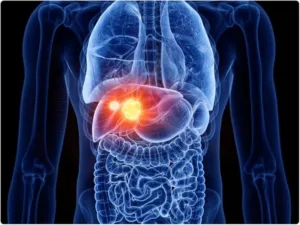
What are tumours? A brief description of tumors. Pic credit: Pinterest
Tumors can be broadly categorized into benign and malignant types, each with distinct characteristics and implications for health.
Benign Tumors
Benign tumors are like the friendly neighbors of the cellular world. They set up shop, but they don’t cause chaos. Here’s a closer look at where they appear:
- Breast Tumors:
- Fibroadenomas: These benign breast tumors consist of glandular and fibrous tissue. They are common in young women.
- Papillomas: Papillomas form in the milk ducts and may cause nipple discharge.
- Digestive System Tumors:
- Colonic Polyps: These benign growths occur in the colon (large intestine). Some may become cancerous over time.
- Gastric Polyps: Found in the stomach lining, these polyps are usually harmless.
- Skin Tumors:
- Nevi (Moles): Most moles are benign, but some may transform into melanoma (a malignant skin cancer).
- Seborrheic Keratoses: These raised, waxy growths appear on the skin surface.
- Uterine Tumors:
- Uterine Fibroids: Common benign tumors in the uterus. They can cause heavy menstrual bleeding and pelvic pain.
- Thyroid Tumors:
- Thyroid Adenomas: These nodules form in the thyroid gland. Most are benign, but some may be cancerous.
Malignant Tumors
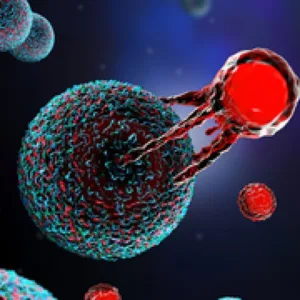
What are tumours? A brief description of tumors. Pic credit: Pinterest
Now, let’s meet the rebels—the malignant tumors. These cells play by their own rules, and it’s not a game of Monopoly:
- Brain Tumors:
- Glioblastoma: A highly aggressive brain tumor that infiltrates nearby tissue.
- Astrocytoma: Another type of brain tumor arising from astrocytes.
- Lung Tumors:
- Lung Cancer: The leading cause of cancer-related deaths worldwide. It includes non-small cell lung cancer (NSCLC) and small cell lung cancer (SCLC).
- Pancreatic Tumors:
- Pancreatic Cancer: Often diagnosed at an advanced stage, this aggressive tumor affects the pancreas.
- Islet Cell Tumors (Pancreatic Neuroendocrine Tumors): These rare tumors arise from pancreatic islet cells.
- Gastrointestinal Tumors:
- Colon Cancer: Arises in the large intestine (colon) and rectum.
- Esophageal Cancer: Affects the esophagus.
- Gastric Cancer (Stomach Cancer): Occurs in the stomach lining.
- Rectal Cancer: Located in the rectum.
- Small Intestine Cancer: Rare but can be aggressive.
- Genitourinary Tumors:
- Bladder Cancer: Affects the bladder lining.
- Kidney (Renal Cell) Cancer: Develops in the kidneys.
- Prostate Cancer: Common in men.
- Testicular Cancer: Occurs in the testicles.
- Ovarian Germ Cell Tumors: Rare ovarian tumors arising from germ cells.
- Hematologic/Blood Tumors:
- Leukemia: A group of blood cancers affecting white blood cells.
- Lymphoma: Includes Hodgkin lymphoma and non-Hodgkin lymphoma.
- Multiple Myeloma: Affects plasma cells in bone marrow.
Diagnosis, Treatment, and Prevention Approaches(A brief description of tumors):

What are tumours? A brief description of tumors. image credit pinterest
Diagnosis of Cancer
1. Physical Examination:
- During a physical exam, doctors palpate areas of the body for lumps or abnormalities. Skin color changes, organ enlargement, or unusual masses may signal the presence of cancer.
2. Laboratory Tests:
- Urine and blood tests help identify abnormalities associated with cancer. For instance, a complete blood count (CBC) may reveal atypical white blood cells in leukemia patients.
3. Imaging Tests:
- Noninvasive imaging techniques allow visualization of internal structures:
- Computerized Tomography (CT) Scan: Detailed cross-sectional images of organs and tissues.
- Magnetic Resonance Imaging (MRI): High-resolution images using magnetic fields.
- Positron Emission Tomography (PET) Scan: Detects metabolic activity in tissues.
- Ultrasound and X-ray: Useful for specific areas.
4. Biopsy:
- The gold standard for cancer diagnosis.
- Involves collecting a tissue sample for laboratory analysis.
- Types of biopsies include fine-needle aspiration, core needle biopsy, and surgical biopsy.
- Under the microscope, cancer cells appear disorganized compared to normal cells.
5. Cancer Staging:
- Determines the extent of cancer spread (stage) to guide treatment decisions.
- Staging tests include bone scans, X-rays, and other imaging modalities.
- Stages are denoted by numbers (0–IV) or letters, reflecting cancer progression.
Treatment Approaches
1. Surgery:
- Removes cancerous tissue.
- Curative (for localized tumors) or palliative (to relieve symptoms).
- Examples: Lumpectomy (breast cancer), colectomy (colon cancer), and prostatectomy (prostate cancer).
2. Radiation Therapy:
- Uses high-energy rays to kill cancer cells or shrink tumors.
- External beam radiation or internal brachytherapy.
- Common for breast, lung, and prostate cancers.
3. Chemotherapy:
- Systemic treatment using drugs to destroy cancer cells.
- Administered orally or intravenously.
- Targets rapidly dividing cells but affects healthy cells too.
4. Immunotherapy:
- Enhances the immune system’s ability to recognize and attack cancer cells.
- Checkpoint inhibitors, cancer vaccines, and adoptive T-cell therapy.
5. Targeted Therapy:
- Focuses on specific molecules involved in cancer growth.
- Examples: Tyrosine kinase inhibitors (TKIs) for chronic myeloid leukemia (CML).
6. Hormone Therapy:
- Blocks hormones that fuel certain cancers (e.g., breast and prostate cancer).
7. Precision Medicine:
- Tailors treatment based on genetic and molecular characteristics of the tumor.
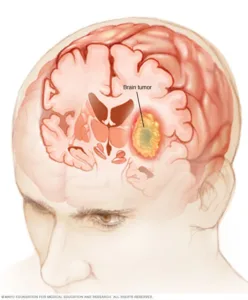
What are tumours? A brief description of tumors. Pic credit: Pinterest
Prevention Strategies
1. Lifestyle Modifications:
- Tobacco Cessation: Smoking cessation reduces cancer risk significantly.
- Healthy Diet: Emphasize fruits, vegetables, whole grains, and limit processed foods.
- Physical Activity: Regular exercise lowers cancer risk.
- Sun Protection: Minimize UV exposure to prevent skin cancer.
2. Vaccination:
- HPV Vaccine: Prevents human papillomavirus (HPV)-related cancers (e.g., cervical cancer).
- Hepatitis B Vaccine: Reduces liver cancer risk.
3. Screening Programs:
- Mammograms: Detect breast cancer early.
- Colonoscopies: Screen for colorectal cancer.
- Pap Smears: Identify cervical abnormalities.
- PSA Tests: Monitor prostate health.
4. Awareness and Education:
- Promote cancer awareness campaigns.
- Encourage regular check-ups and self-examinations.
Conclusion:(A brief description of tumors)
Tumors, whether benign or malignant, weave intricate narratives within the human body. Here’s what we’ve learned:
- Benign Tumors:
- These friendly neighbors grow slowly, respecting boundaries.
- Uterine fibroids, lipomas, and papillomas fall into this category.
- While rarely life-threatening, they may require attention if they misbehave.
- Malignant Tumors:
- The rebels of the cellular world, they break rules and invade neighboring territories.
- Brain tumors like glioblastoma, lung cancer, and pancreatic malignancies fall into this group.
- Aggressive treatment is essential to tame their unruly behavior.
- Cellular Rebellion and Genetic Mysteries:
- Tumor formation involves genetic mutations, genotoxic effects, and cellular misbehavior.
- Researchers decode signals, study cell-by-cell variability, and embrace genomic advances.
- Diagnosis and Treatment:
- Physical exams, biopsies, and imaging guide diagnosis.
- Surgery, radiation, chemotherapy, immunotherapy, and targeted therapies combat tumors.
- Precision medicine tailors treatment to individual characteristics.
- Prevention Strategies:
- Lifestyle modifications, vaccination, and screening programs play pivotal roles.
- Awareness and education empower individuals to take charge of their health.
FAQs:(A brief description of tumors)
- Who gets cancer?
- Anyone can get cancer, although the risk increases with age. Factors such as smoking, diet, family history, and workplace/environmental exposures influence individual risk.
- How does cancer start?
- Cancer begins when cells mutate and grow out of control, forming a mass (tumor). Tumors can be benign (noncancerous) or malignant (cancerous). Metastasis occurs when cancer spreads to other parts of the body.
- Is cancer genetic?
- Yes, cancer is a genetic disease caused by mutations in genes that control cell function. While some mutations are inherited, most occur during a person’s lifetime due to factors beyond genetics.
- Is cancer contagious?
- No, cancer is not contagious like the flu or a cold. You cannot catch cancer from someone who has the disease.
- Is there a vaccine for cancer?
- There is no direct vaccine for cancer, but vaccines exist for viruses linked to cancer. For example, HPV and hepatitis B vaccines protect against strains associated with cervical, anal, throat, penile, and liver cancers.
- Can cancer be cured?
- Yes, cancer can be cured. Remission occurs when cancer treatment is effective. Partial remission means the tumor shrinks, while complete remission indicates no sign of cancer. Long-term remission reduces the likelihood of recurrence.
- What are the stages of cancer, and what do they mean?
- Cancer stages indicate the extent of disease spread. Stages range from 0 (in situ) to IV (advanced). They guide treatment decisions and prognosis.
- Does cancer have symptoms?
- Yes, cancer can present various symptoms depending on the type and stage. Common symptoms include fatigue, unexplained weight loss, pain, changes in skin or moles, and persistent cough.
- Can lifestyle choices prevent cancer?
- Is early detection important?
For More You can visit: https://taazakhobor.in/
More you can read:
How alcohol can harm your body? best blog of 2024. Don’t miss at all
Crypto Airdrops in 2024: All the important things
How to look young and beautiful and handsome naturally in 2024. No harmful process
How brain works psychology. 99% people don’t know
Why sleep is important for health? The topic that 99.99% people don’t even know!!
